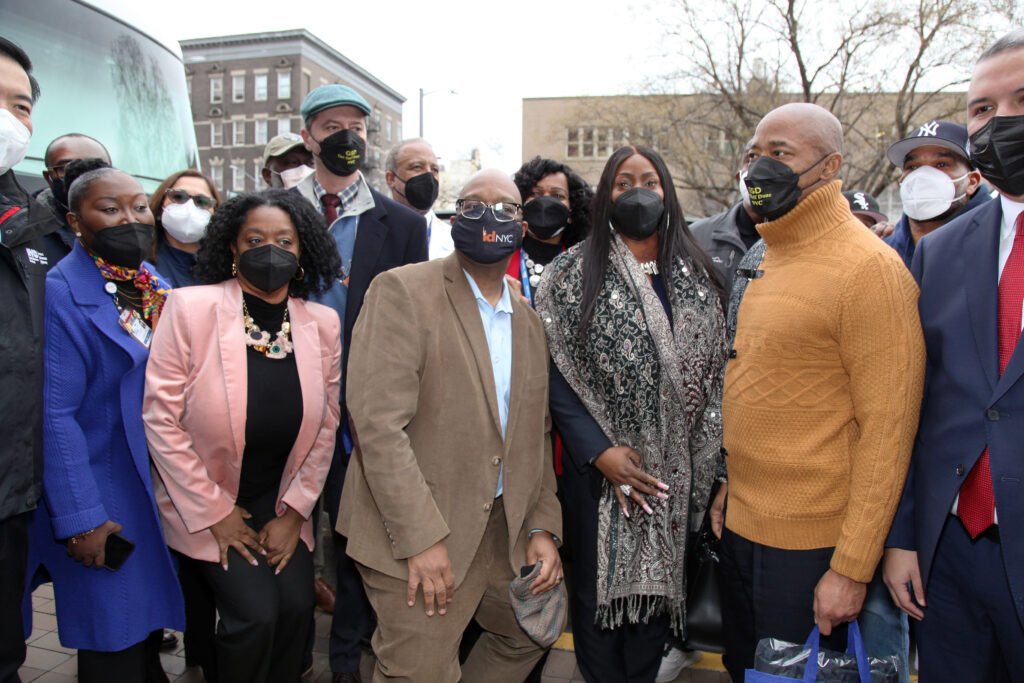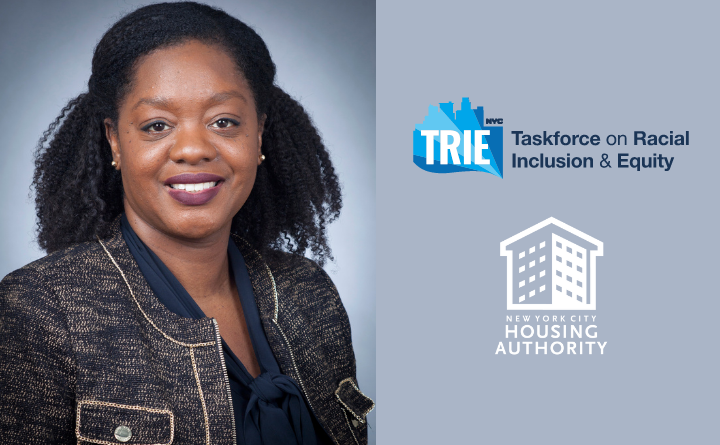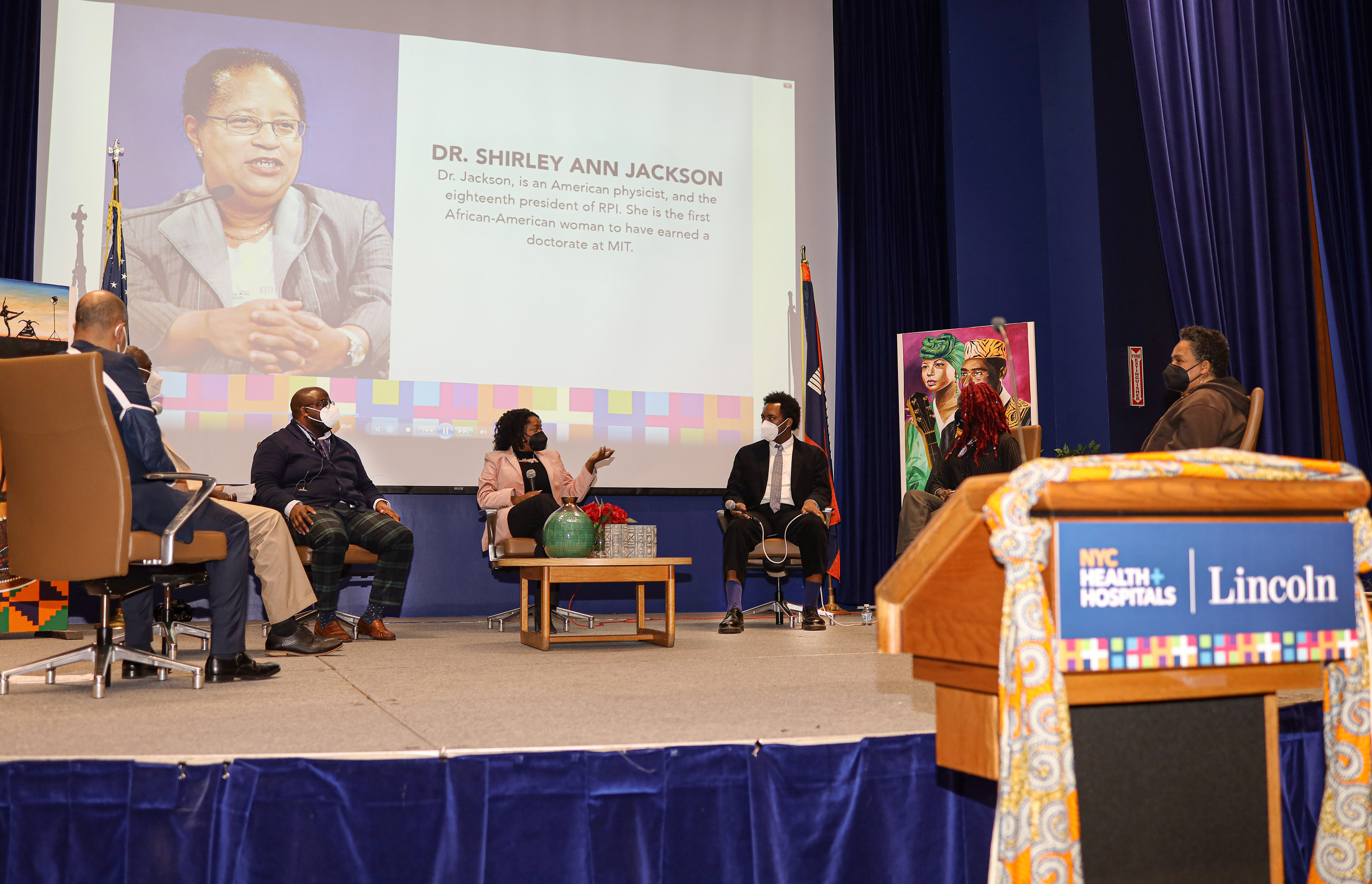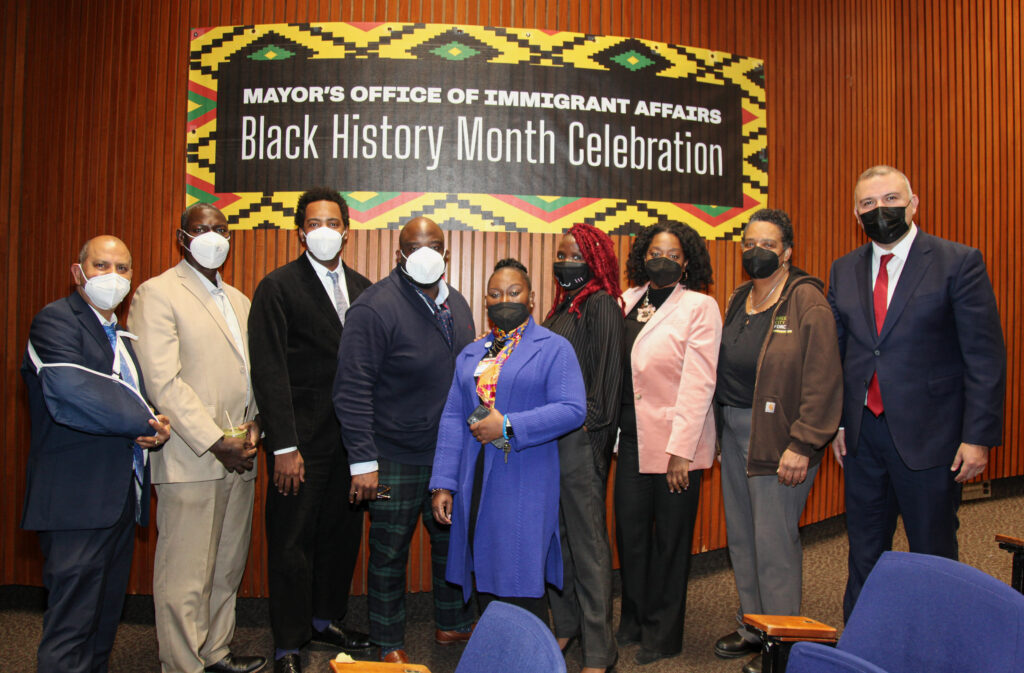The Pandemic & Beyond: The Future of Racial Inclusion & Equity in New York City
In 2020, amid a global pandemic and nationwide civil rights protests, the City launched the Taskforce on Racial Inclusion & Equity to address racial and economic disparities that were worsened by the COVID-19 pandemic in Black communities and other communities of color. The Taskforce strives to improve outcomes by transforming policies, programs, and systems throughout City agencies to prioritize change. Its initiatives involve community engagement, emergency food access, health programs, broadband access, programs for small business owners, and youth programs. The Taskforce is composed of representatives from over 60 City agencies, many of whom are people of color who live and/or work in one of the 33 neighborhoods the Taskforce prioritizes due to the inordinate impact of COVID-19 as well as other health and socioeconomic inequalities.
The Taskforce is led by Executive Director Sideya Sherman, who was appointed in July 2020. Ms. Sherman is also Executive Vice President for NYCHA’s Community Engagement and Partnerships (CEP), responsible for managing six departments that connect NYCHA residents to economic opportunities and services. She began her career at NYCHA in 2011 as part of the early team forming the Office of Resident Economic Empowerment & Sustainability (REES), which helps link residents to employment, education and vocational training, financial empowerment, and business development opportunities.

The NYCHA Journal sat down to talk with Ms. Sherman about the Taskforce’s work over the past two years as well as the future of racial equity work.
Last we spoke, you were just named Executive Director of the Taskforce. Can you tell us about the programs you’re most proud of that the Taskforce has been behind?
The Taskforce was convened at a time when we were not only dealing with the pandemic, but there was also a call for racial justice in our city and we also had City employees working around the clock to respond to the pandemic and experiencing trauma in their own lives as well. Folks were coming together to think about the ways in which we can address disparities, which people were living themselves, and it was also a moment when there was a community that was really invested in and developed by virtue of working together through such a difficult time, so that’s probably one of the best accomplishments of the Taskforce.
In terms of the projects and initiatives we’ve done, the Taskforce was able to drive over $380 million in new investment to impacted communities geographically and by constituency – and that doesn’t include all the ways Taskforce neighborhoods have been prioritized for vaccinations and other ways they’ve been positioned to be prioritized in other City systems.
We have a really cool program called TRIE Neighborhoods, where there are coalitions in priority neighborhoods led by community-based organizations. Right now, they’re leading a participatory budgeting process in those communities, so it’s not just responding to the pandemic but thinking about what our future looks like and about the investments folks want to make in their communities. We’ve also been engaging NYCHA residents and resident leaders to join in the participatory process so that they can vote on the initiatives they want to see.
What do you think the future of racial equity work looks like? After the COVID-19 pandemic is over, the hardest-hit neighborhoods will still be feeling the effects – what’s next?
A lot of our initial projects were very pandemic focused, but even mid-year we began to move toward other initiatives, like the Universal NYC Baby Bonds – it’s a college savings program for public school children that’s focused on generational wealth building and addressing the wealth gap.
What the pandemic did was just expose inequities that already existed. The reason why people were disproportionately impacted is because they were already disproportionately impacted by so many other disparities and other forms of systemic racism and discrimination for generations. For instance, the broadband plan [which will provide high-speed internet service to 600,000 underserved New Yorkers, including NYCHA residents] manifests all the digital redlining that existed in our city for years.
Addressing the cause of the disparities is the future of this work. We’ve already started to pivot towards the work that’s more structural in nature – programmatic or policy interventions that will create meaningful change. Whether it’s the Taskforce or the various equity functions that exist in our city, because there are many, I think there’s a need to address equity at a level where there are real-time initiatives people can see and benefit from now, and that’s a lot of the work the Taskforce did and is doing.
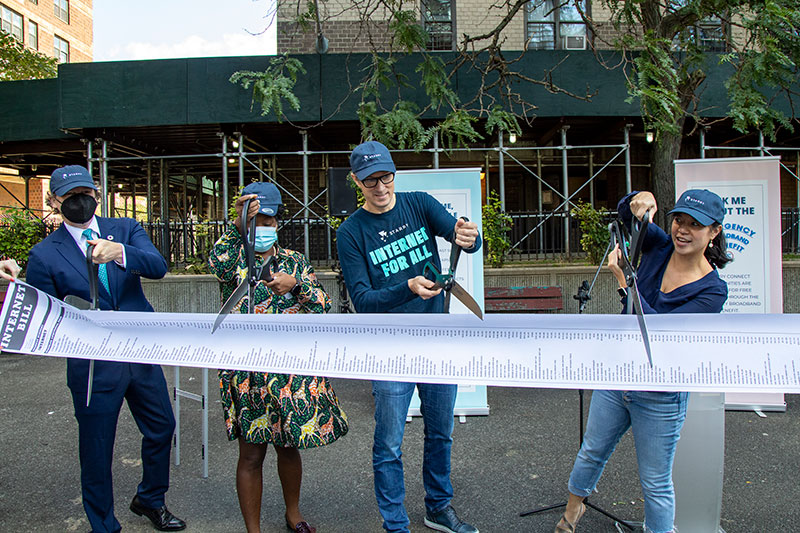
How does the Taskforce work affect NYCHA residents?
About 80 percent of NYCHA residents live in Taskforce neighborhoods. We’ve had a focus on these neighborhoods knowing that the City continues to have a pandemic response that consistently prioritizes communities based on the need at the time with respect to COVID infections. But the Taskforce has had a focus on these 33 neighborhoods and on key populations overall, including public housing residents, undocumented New Yorkers, and New Yorkers of color.
I think it’s been helpful to try to center NYCHA in equity discussions that are happening in our city and also to have the perspective of coming from the Housing Authority, understanding the complexity of the work we do.
It’s been great because we’ve been able to weave NYCHA into other Taskforce initiatives and priorities and also have specific initiatives funded by the Taskforce for NYCHA, such as the program where NYCHA residents with catering businesses are delivering meals to folks affected by gas outages.
Recently, Ms. Sherman co-moderated a panel on Black health and wellness presented by Mayor Eric Adams and the Mayor’s Office on Immigrant Affairs. See photos below.
